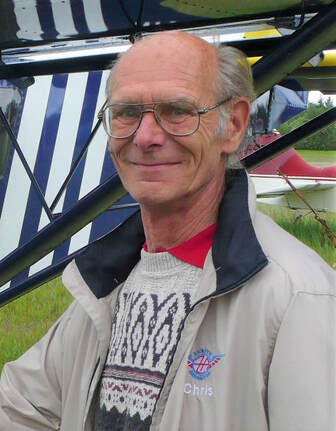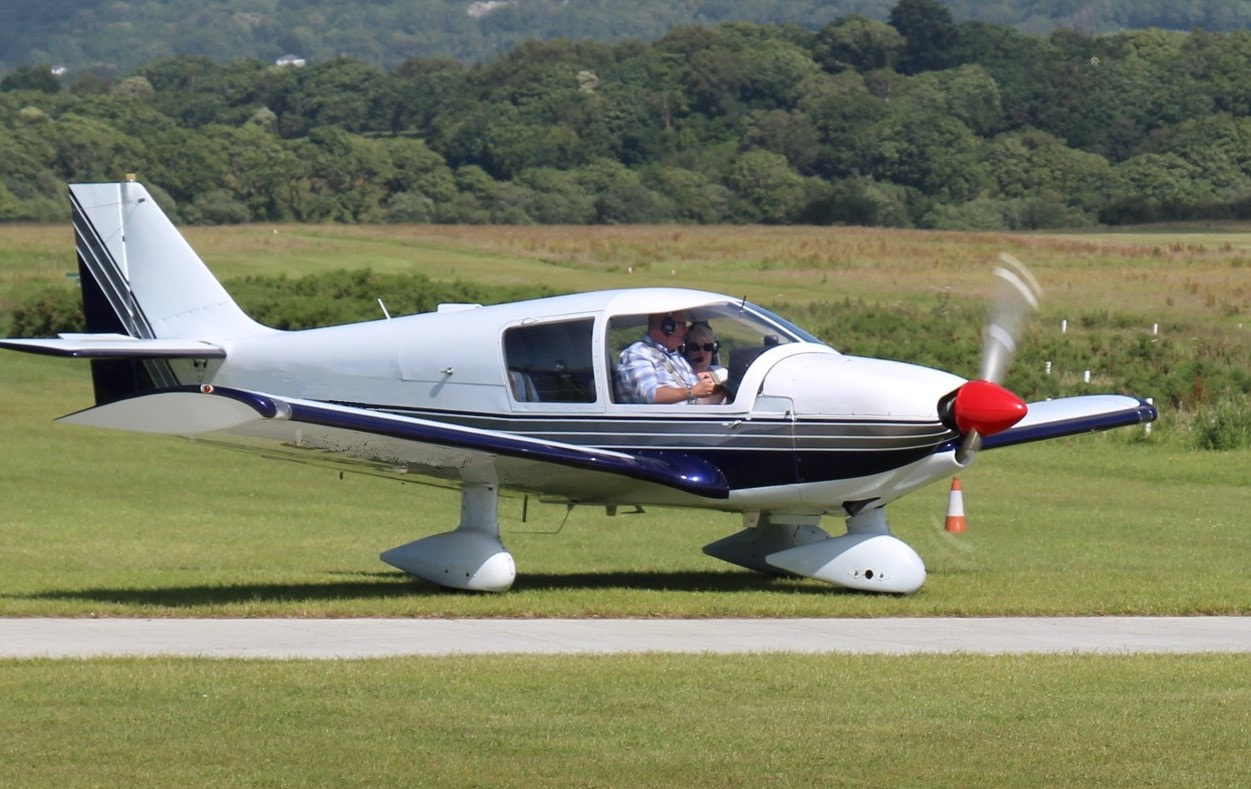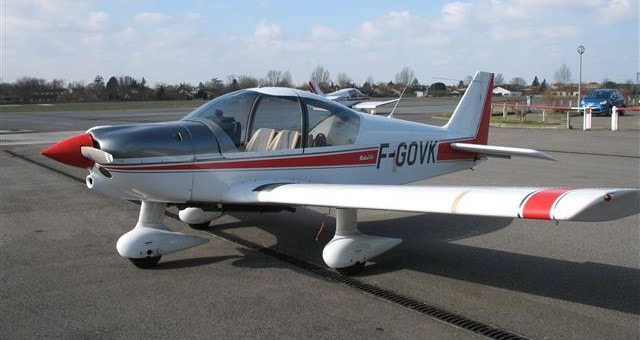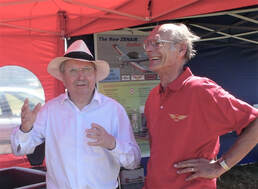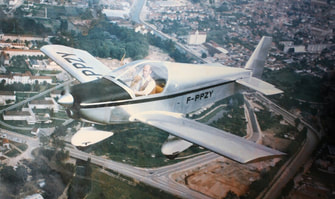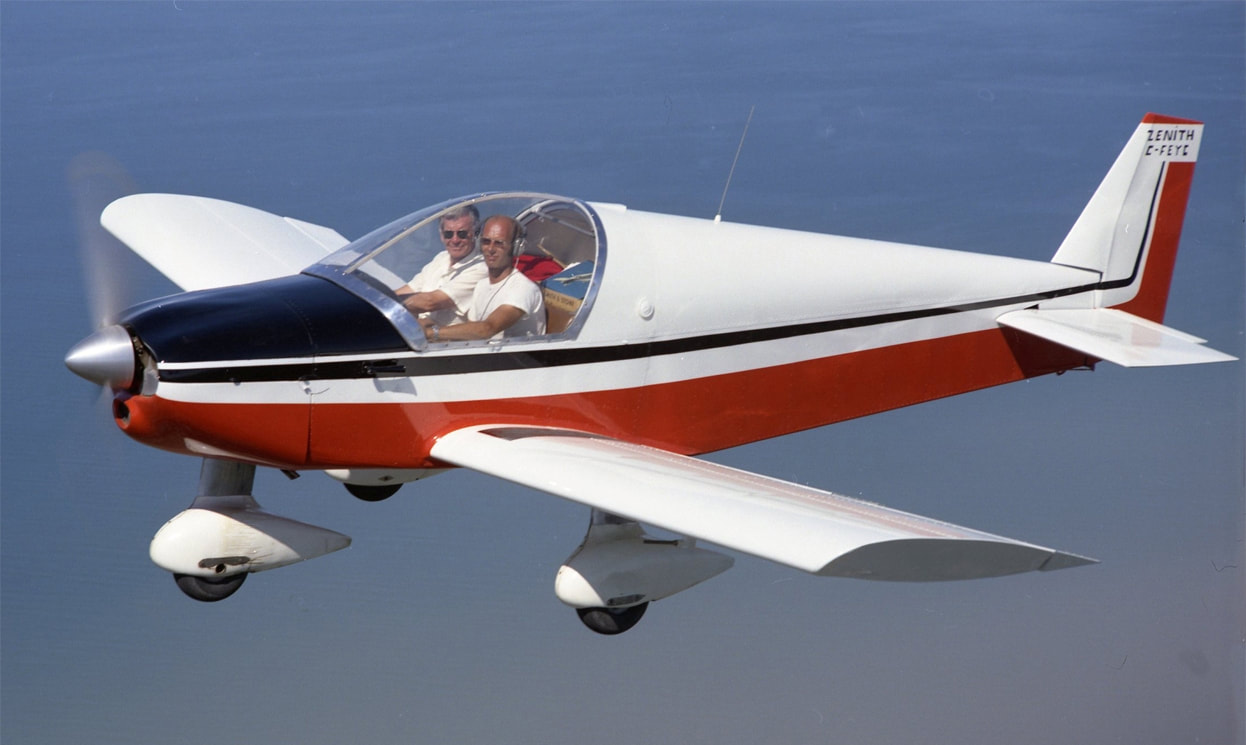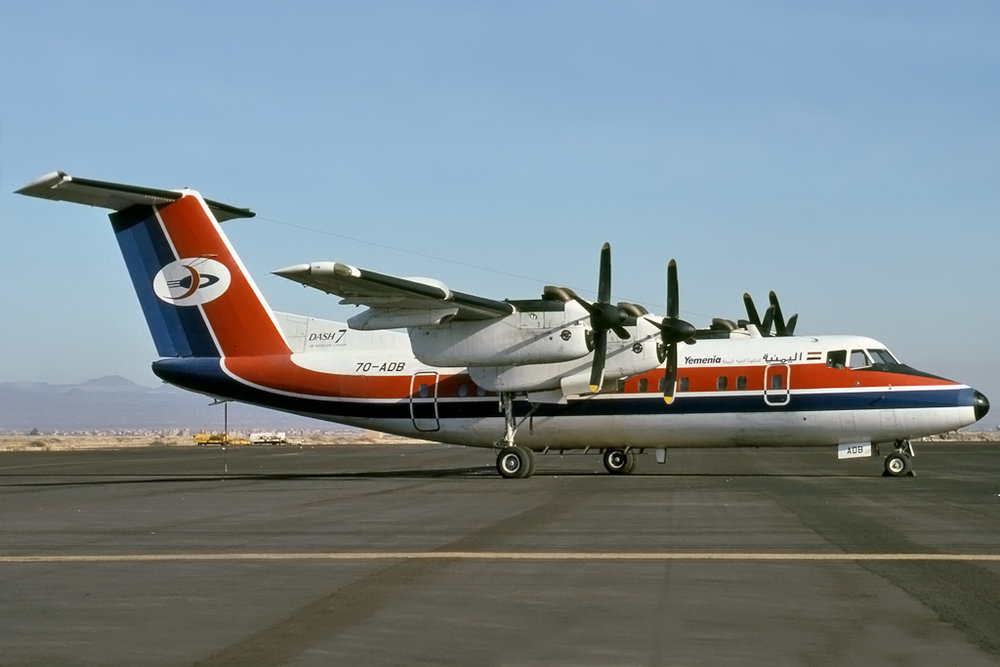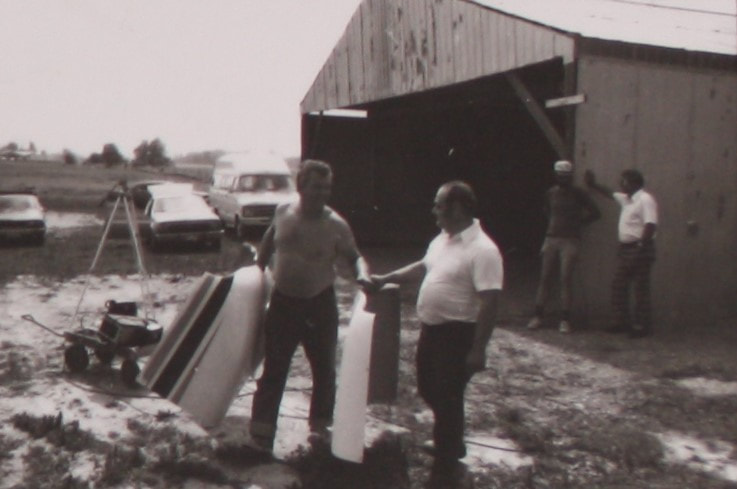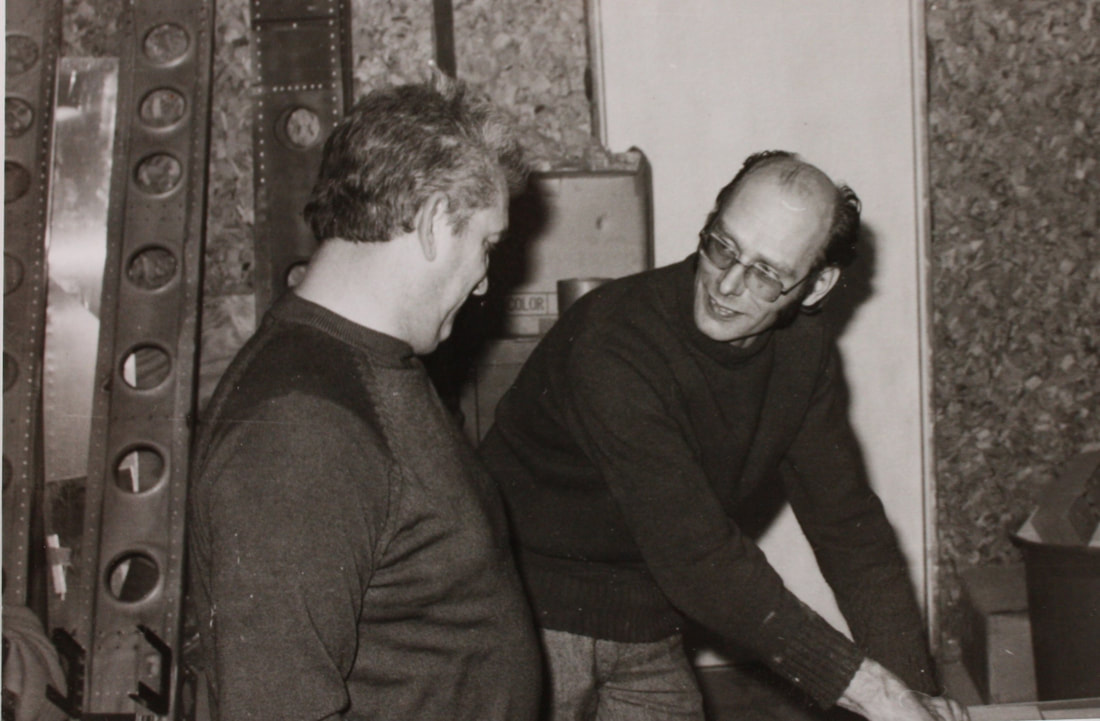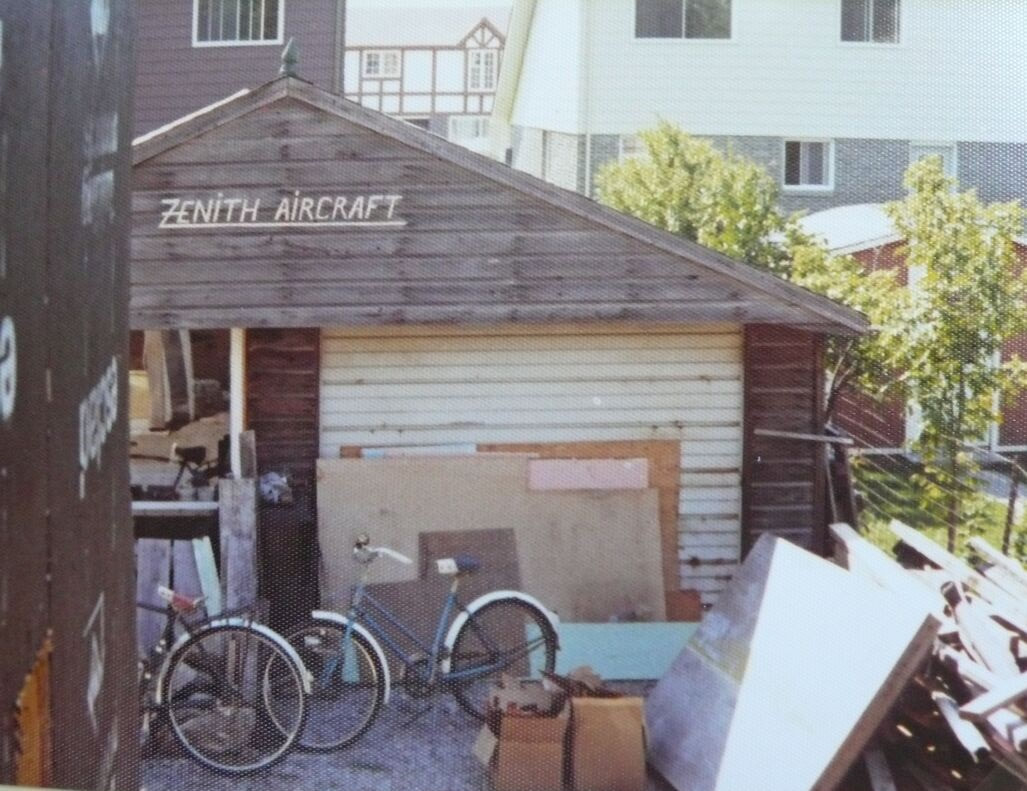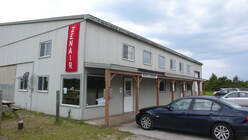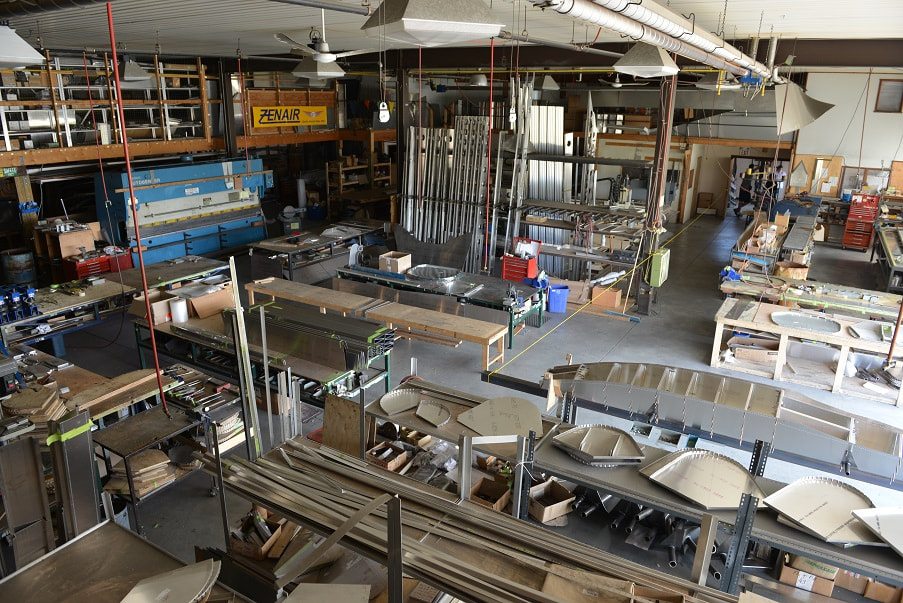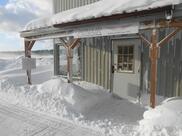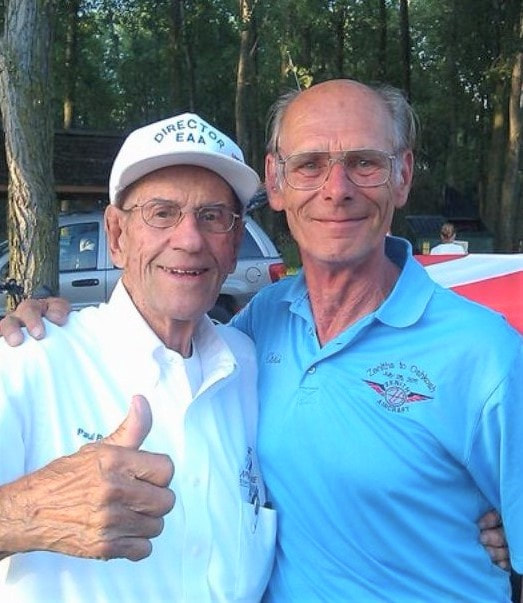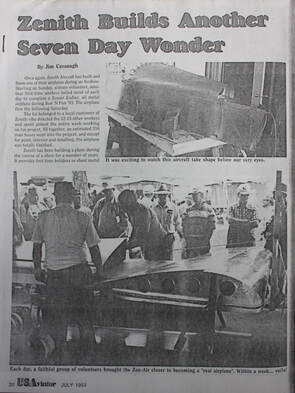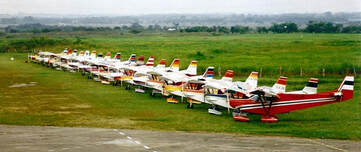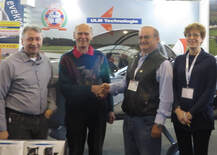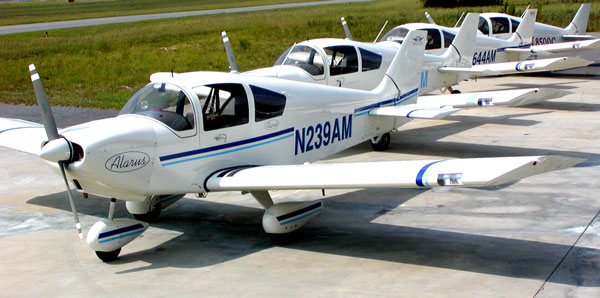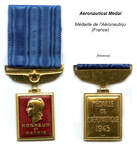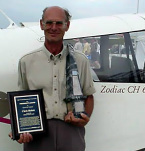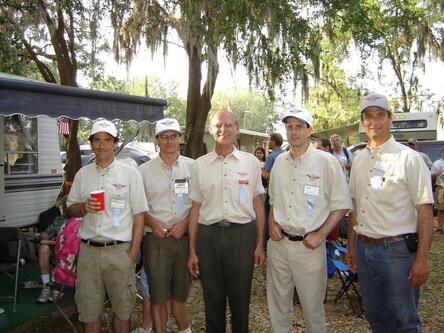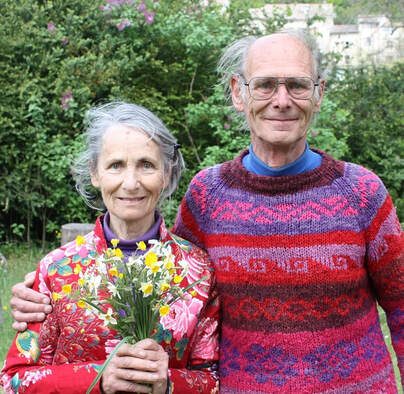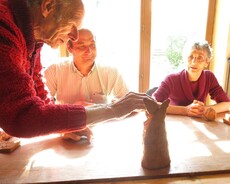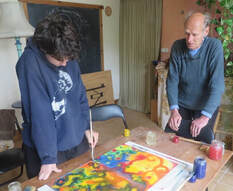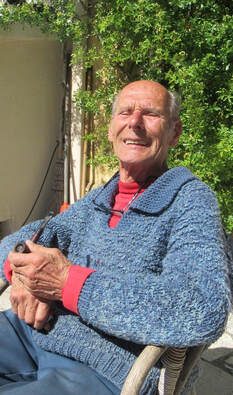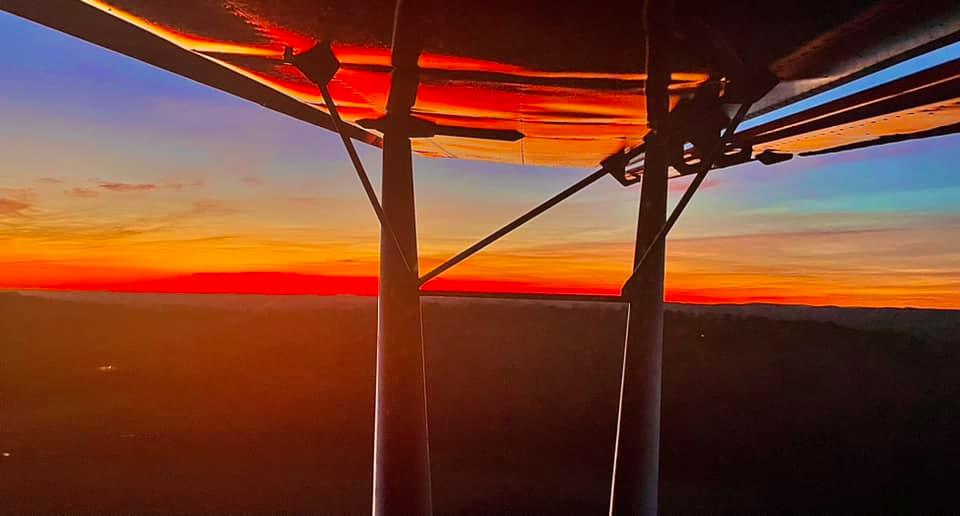|
CHRIS HEINTZ (Nov. 21,1938 – Apr. 30, 2021)
Homage to a Man and his Dream An Illustrated Biography of Chris' Professional Life
Chris was the first of four children (2 boys and 2 girls) born to Erwin and Magda Heintz in Strasbourg, France. His father was a pioneering scientific researcher and his mother an ophthalmologist (no small feat for a woman in that day and age). Surrounded from early childhood by strong personalities, inquiring minds, scientific methodology, creativity and a natural desire to help others, Chris's adventure-filled childhood and youth is full of fun anecdotes of him trying things out and of building things (i.e. canoes that sank, go-karts with no brakes, etc.). In those simpler times of no television and of no internet, but also of war and of other hardships (the region switched between France and Germany twice in that period), Chris and his family had to relocate several times and to learn French and German in addition to their native Alsatian dialect (like the rest of the local population)... Chris learned to cope and how to adapt at an early age, capacities that would help him greatly in the future when he would move to Canada and have to master English as well as North American standards and culture.
|
With the war over, Chris was barely out of his teens when he was first introduced to the wonders of flight. It was just a quick introductory flight in a two-seat aircraft, but that was all it took! From that moment on, his dream became to design and build airplanes that anyone could own and fly! This was in the mid-1950s and that first flight (“Young Eagles” of the time) set the stage for Chris’ long and successful career as a light aircraft designer & kit manufacturer spanning two continents.
|
Chris completed his professional aeronautical training at one of Europe’s most prestigious engineering schools, the ETA in Zurich, Switzerland. Remarkably, he helped pay for his studies by performing magic shows on city squares that included daring sword-swallowing feats as well as fire-eating routines! His first job as an aeronautical engineer found him at Sud-Aviation (Aerospatiale), as a member of the top-level design team working on the Concorde jetliner. The experience was of great personal and professional value to Chris, but the supersonic Concorde just wasn’t the “fun and affordable” aircraft that he longed to design for week-end pilots.
|
As a next step on his career path, Chris accepted a position with Avion Pierre Robin, a well-established and reputable manufacturer of wood & fabric low-wing aircraft (Jodels). Within a few years, Chris had designed two new all-metal designs that would be certified and produced for many years to come. Hundreds of these aircraft (HR 100 and HR 200) would eventually find their way into flying schools and aeroclubs throughout Europe. This was getting closer to Chris’ original dream, unfortunately, at that point, flying in Europe became more and more controlled and restricted, while at the same time, the company (spurred by its success), asked for ever larger and faster designs from the engineering department he was by then heading.
For Chris, the “every-man” airplane could be neither large nor fast; the time had therefore come for him to look elsewhere. Having designed and built his own personal two-seater (the “Zenith” CH 200) during his spare time at Avion Robin, and having noted the keen interest from fellow pilots who saw it and flew it, he recognized an opportunity. Shortly thereafter, Chris and his wife boldly sold everything that they owned and took their five children and the Zenith to Canada – a land of wide-open spaces, fewer rules and many pilots…
On arriving in Canada in January 1973, Chris worked for two years at De Havilland Aircraft of Canada (in Toronto) with the engineering crew for the Dash-7 (tail section). While there, he noticed a number of fellow employees with a particularly elevated passion for aviation. After work, they would continue to meet to tinker, design, build, and even fly their own creations! The group even had formal meetings: it was the local Chapter (41) of the Experimental Aircraft Association (EAA)!
Chris flew his prototype Zenith CH 200 to his first Oshkosh Fly-In that summer. Again, the high level of interest in his all-metal design greatly motivated him and he immediately began translating the drawings (blueprints) and construction manuals for the aircraft. It wasn’t long before plans-owners (“scratch-builders”) called again to ask about the availability of parts to help them build their own Zeniths. Chris obligingly began cutting and bending aluminum parts in the basement of his family home in Richmond-Hill while his good friend Gerry Boudreau started welding steel assemblies in his own garage an hour away. As the demand for parts increased, Chris' basement soon got too cramped for space. He found an old two-car garage across town and to his family's surprise, re-assembled it in the backyard to work in.
When Chris first attempted to incorporate the fledgling venture as Zenith Aircraft in the Summer of 1974, the “Zenith” name was deemed “too-widely used” by the clerk processing the application; Chris then simply took the first letters of both words and re-submitted “Zenair LTD” …
That was 48 years ago!
When Chris and Gerry had both outgrown their respective garages, they found and rented a commercial building in the town of Nobleton (north of Toronto), midway between the two partners. This would become home to Zenair for the next ten years, and the birthplace for the CH 100 series, the CH 300 and the Zipper ultralight series. Wooden propellers of all shapes and sizes were manufactured there; this is also where Chris designed and build the first all-aluminium set of Zenair floats which the company still manufactures today. The first CH 600 “Zodiac” was also built in Nobleton, as was the prototype STOL CH 701. With regular parts production continuing to increase, airframe "kits" being developed and all these prototypes being built under the same roof, shop space soon got very tight - again!
|
|
|
With the untimely and very unfortunate passing of Gerry Boudreau (from cancer) and the advent of new ultralight regulations in Canada (which allowed the manufacturing of ready-to-fly aircraft), it was time to look for a new, larger home for the company, preferably on an airport… Land was found on the Huronia Municipal Airport (in Midland, Ontario) and Chris immediately set out to design and build the unique structure that, to this day, houses Zenair's manufacturing facilities as well as engineering, bookkeeping and sales offices (and more)...
With the untimely and very unfortunate passing of Gerry Boudreau (from cancer) and the advent of new ultralight regulations in Canada (which allowed the manufacturing of ready-to-fly aircraft), it was time to look for a new, larger home for the company, preferably on an airport… Land was found on the Huronia Municipal Airport (in Midland, Ontario) and Chris immediately set out to design and build the unique structure that, to this day, houses Zenair's manufacturing facilities as well as engineering, bookkeeping and sales offices (and more)...
Throughout the company's growth and development, Chris made sure to always remain true to his original dream: To offer a range of simple and affordable, easy-to-fly (kit) airplane designs suitable for amateur builders and recreational pilots. Over the years, Zenair produced kits for several single-seat aircraft, two, three and four-seat aircraft, low-wing and high-wing designs, ultralights, and most recently, certified VLA and LSA aircraft. When his son Sebastien launched Zenith Aircraft Co. in Mexico, Missouri (1992), he too adopted his father's vision and focused on designs that fit the new Light Sport (LSA) category for Sport Pilots.
For the next 35 years (until his retirement), Chris attended the world-famous Oshkosh fly-in every Summer to display and promote his latest designs and innovations. First, as a guest of Steve Whitman where he stayed at his beautiful house next to the runway during the fly-in; then on-site at the campground (Camp Scholler) with his participating employees and his growing children, then (after too-many rained-out campsites and submerged tents) at the university dorms in town. At the show, Chris gave daily educational forums (sometimes two!), led hands-on workshop demonstrations, flew demo flights and answered thousands of questions from builders and potential customers, on the flight-line and at the Zenith display booth, introducing many to the world of homebuilt aircraft.
Not only did Chris do this every year in Wisconsin (for the EAA Oshkosh fly-in), but he also did the same in Florida (for Sun 'n Fun) and in Washington (Arlington), in Arizona (Copperstate), in Ontario (Orillia), in Quebec (Sherbrooke), and so on... Simply-put, for Chris and his family, the fly-in circuit set their calendar for the year - Every year! These events created opportunities for him to meet the builders and flyers of his aircraft; meetings that Chris always found informative and gratifying. He listened to the feedback and often integrated suggestions into his next models. Orders generated at these shows are what kept Zenair and Zenith Aircraft busy the rest of the year. Over the years, Chris considered many of the customers he met again and again at fly-ins, air-shows and EAA meetings as his friends.
As if all this activity wasn't enough, Chris also pioneered the concept of assembling an entire aircraft during a one-week event - and flying it on the last day! Imagine the mind-boggling organization to ensure that every part, every fastener, every tool needed to assemble the airframe, to install the engine and to connect the instruments was available and ready at just the right place and time; most builders were volunteers and many had never worked on a plane before! What could possibly go wrong (very publicly)?! Amazingly, Chris and his team accomplished this and “wowed” the crowds not just once, but a number of times at the Oshkosh Airventure Fly-in, then also at Sun'n Fun and at several other venues - all with different models of his designs. There is indeed genius in audacity!
Under Chris’ watchful eye and guidance, the company he founded and developed steadfastly became one of the most reputable in the industry. Today, this family-run business is among the best established and most experienced light aircraft kits manufacturers in the world; the airframe kits for his designs are some of the most advanced anywhere and are now fully manufactured in the United States by Zenith Aircraft Company. In recent years, Chris Heintz (CH) designs have consistently been recognized as the leading brand of Light Sport Aircraft (based on annual 'new aircraft registrations' in the U.S.). The aircraft that Chris conceived continue to be popular in Europe and around the world; his rugged, high-performance STOL series (CH 701/750/801) are especially well suited for short runways and “off airport” operations.
In the quest to make his aircraft as widely available as possible, Chris also worked with a number of companies over the years that assembled and sold his designs "ready-to-fly" (rather than in kit form). In time, these manufacturers from Colombia (S.A.), the Czech Republic, Italy, Jordan and the USA added several thousand factory-built aircraft to the ever-growing number of CH designs self-assembled by amateur builders from all walks of life. These professionally-assembled certified Heintz airplanes are ideal for flying schools, some are even configured for glider towing: Perfect for fun recreational flying, just as Chris had intended!
Over 11,000 builders/pilots worldwide already have a Heintz-designed aircraft in their workshop, their hangar or on the flight-line. Chris has reached and educated thousands more through his hundreds of lectures, magazine articles, newsletters, or his book “Flying on Your Own Wings” first published in 2010. In this book, Chris methodically outlines and shares the wide spectrum of aeronautical knowledge needed to successfully design and build a light aircraft. Still in perfect alignment with his lifelong dream to allow common individuals to build and fly their own aircraft, he follows the noble adage that it is better to teach someone to fish than to just sell them a fish.
|
It is this persistent and selfless dedication to promoting light, recreational aviation that led the government of his native France to recently award Chris the country’s rarely-given and prestigious Medal of Aeronautics: for his “lifetime of achievements and contributions to aviation”. Among the many awards and recognitions he received, Chris was inducted into the EAA "Hall of Fame" in 1999. He also received the prestigious Federation Aéronautique Internationale (FAI) Honorary Group Diploma for "greatly contributing to the progress of aviation". A life-long advocate at all levels for the advancement and promotion of homebuilding and recreational flying, Chris also worked closely with numerous civil aviation authorities and organizations to develop light aircraft regulations that make flying more accessible. Chris was a key author of the ground-breaking Canadian TP10141 “Design Standards for Advanced Ultra-light Aeroplanes” (which later largely influenced the FAA's Sport Pilot rules). He was an active player in defining ASTM's international standards for Light Sport Aircraft and also consulted directly with the FAA on the development of its Sport Pilot / Light Sport Aircraft category.
|
Having retired from the business now run by his four sons, Chris spent the last ten years gently pursuing a more quiet and simple life with other interests by his artist wife’s side. Together they found joy in painting and clay-modelling in her studio and made music together on an almost daily basis. Until a few days before his death, he enjoyed reading and peacefully sitting outside in the sun of southern France, contemplating and smoking his pipe… He always had a ready smile and a heartfelt greeting for his children, grand-children and the occasional visitor; over the past year, he regularly participated in weekly Zoom meetings with his immediate family .
After a short illness, Chris Heintz peacefully and quietly passed away on April 30th at home surrounded by his wife, his daughter and son-in-law. Chris is survived by one brother and one sister; his wife Annemarie; his five children & their spouses/partners, and his 12 grandchildren. All are grateful for the love, the knowledge and the wisdom (gifts) that he shared with them.
________________________________________________________________________________________________________
You are invited to share a thought or a send-off to Chris through zenith.aero, the Zenith Aircraft Co. or the Zenair Facebook pages.
More on Designer Chris Heintz
Chris Heintz Design History (chart)
Chris Heintz' book: Flying On Your Own Wings
Chris Heintz awards and accomplishments
Design Articles by Chris Heintz
Chris Heintz honored at AirVenture 2011
Zenair - Company History
Chris Heintz Design History (chart)
Chris Heintz' book: Flying On Your Own Wings
Chris Heintz awards and accomplishments
Design Articles by Chris Heintz
Chris Heintz honored at AirVenture 2011
Zenair - Company History

